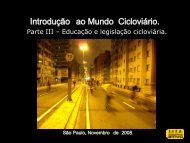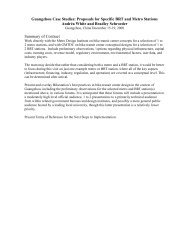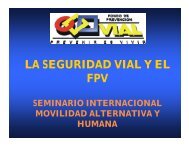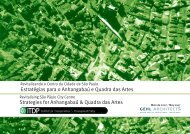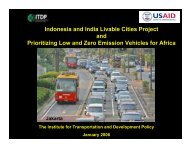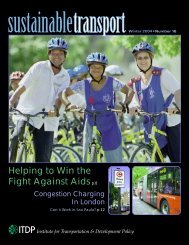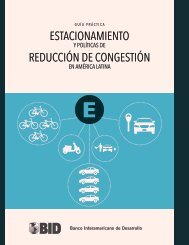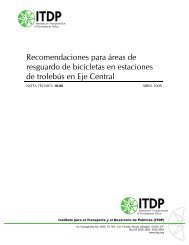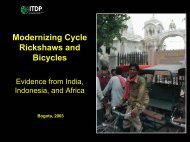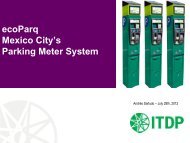Making TransJakarta a World Class BRT System - ITDP | Institute for ...
Making TransJakarta a World Class BRT System - ITDP | Institute for ...
Making TransJakarta a World Class BRT System - ITDP | Institute for ...
You also want an ePaper? Increase the reach of your titles
YUMPU automatically turns print PDFs into web optimized ePapers that Google loves.
had also visited <strong>BRT</strong> systems in Brazil, Bogota, and Quito, the three best systems in the<br />
world. Despite this, much of this technical advice was not heeded.<br />
These technical problems could have been avoided either by having the Governor give<br />
real power to the Tim Coordinasi, by having a leadership at DisHub with a higher level of<br />
technical competency and/or concern, and/or perhaps by giving the planning process<br />
more time.<br />
To avoid similar technical mistakes in the future corridors, from an institutional<br />
perspective, it is imperative that the Governor empower someone with sufficient<br />
technical grounding in Bus Rapid Transit system design to make the final decisions on<br />
design and routing in future corridors. This could be done either by giving a technical<br />
person outside of DisHub veto-power over DisHub’s final designs, or by replacing the<br />
leadership at DisHub with persons of a higher level of technical understanding, or by<br />
transferring the planning powers to <strong>TransJakarta</strong>. Any of these would be necessary but<br />
insufficient to ensure good technical outcomes.<br />
II.2. <strong>TransJakarta</strong>’s Institutional Structure<br />
While <strong>TransJakarta</strong> was being constructed, DKI Jakarta decided not to rely on DisHub to<br />
operate and manage the new <strong>TransJakarta</strong> system, but to create a new entity. While the<br />
original idea was to insulate <strong>TransJakarta</strong> management and operational decisions from<br />
political interference, the way <strong>TransJakarta</strong> was initially set up severely constrained its<br />
influence and left much of the critical decision-making powers in the hands of DisHub.<br />
There were three critical differences between <strong>TransJakarta</strong> and TransMilenio. Unlike<br />
TransMilenio,<br />
o <strong>TransJakarta</strong> does not have the capacity, the budget, or the clear mandate to do the<br />
planning <strong>for</strong> the future <strong>TransJakarta</strong> corridors.<br />
o <strong>TransJakarta</strong> does not directly control the revenue from ticket sales<br />
o <strong>TransJakarta</strong> does not have the power to regulate bus routes in the <strong>TransJakarta</strong><br />
corridors.<br />
<strong>TransJakarta</strong> was created on December 31, 2003, when Governor Sutiyoso issued decree<br />
No. 110/2003 establishing a busway managing company named Badan Pengelola<br />
Transjakarta, or BP <strong>TransJakarta</strong>. Transjakarta was created as a BP – Badan Pengelola<br />
because it can be done directly by the Governor without requiring an act of the regional<br />
parliament, DPRD. BP <strong>TransJakarta</strong> currently has responsibility only to manage and<br />
control the 12.9 km busway operating between Blok M and Kota. This includes<br />
supervising the operating contract, the ticketing system contract, maintenance of the<br />
stations and pedestrian walkways connecting to the pedestrian overpass, and security on<br />
<strong>TransJakarta</strong> buses.<br />
Final Recommendations <strong>for</strong> <strong>TransJakarta</strong>, p. 27



